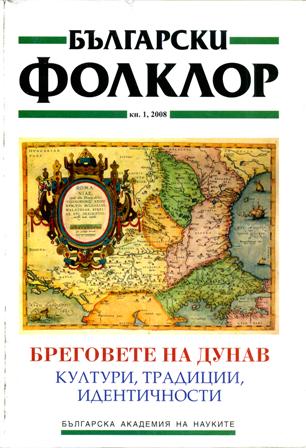От Дунав до Делауеър. Миграционни процеси, етнокултурна идентичност и фолклор
From Danube to Delaware: Migration Processes, Ethno-Cultural Identities and Folklore
Author(s): Iveta Todorova-PirgovaSubject(s): Customs / Folklore
Published by: Институт за етнология и фолклористика с Етнографски музей при БАН
Summary/Abstract: The main focus of this paper is on the complex dynamics of folklore and cultural identities as shaped by the intensive migrations of ethnic groups in the middle and lower Delaware valley, which runs in the so called Middle-Atlantic region of the USA. More precisely, my interest is orientated toward the groups of Bulgarians, Romanians and Hungarians residing in the eastern parts of Pennsylvania and Delaware and in the Western parts of New Jersey, all along the Delaware River. The paper is structured into four major sections: 1. Between the Old and the New World: Concepts of Immigrant and Ethnic Folklore in the U.S. There are two analytical perspectives here presenting the nature of the researchers' consideration of immigrant and ethnic folklore in the country: the one related to the theoretical shifts within the folkloristics as a discipline, and the one related to some important political and historical changes in the country and their impact on the process of re-thinking some of the dominant ideas about immigrant cultures and traditions. 2. Immigration Waves and the Dynamics of the Regional Ethno-Cultural Maps. Here I give more general review of the basic migration movements in the Middle-Atlantic for the last three centuries, for they form the unique ethno-cultural space of the region and greatly influence the specific cultural dynamics of every immigrant and ethnic culture there, including the ones of Bulgarians, Romanians and Hungarians. 3. Old Immigrants: Cultural Markers of Double and Multiple Identities. Here I comment on the double and multiple ethno-cultural identities of the old immigrants, on the role of the third generation for the cultural continuation and change in different historical periods. I also give a review of the ethnic cultural centers in the region (churches, ethnic museums and organizations) and present the folklore of the immigration experience in the cultural heritage of the old immigrants. 4. New Immigrants: Images of Immigration Experience and Forms of Cultural Resistance. Here I present narratives about the immigration experience of the new immigrants and the cultural stereotypes as incorporated in their personal stories, in order to analyze their significance in the process of cultural resistance. The last part of this section is devoted to the specific perceptions and presentations of the ethnic cultures as traditions for us and traditions for the others. The paper offers an extensive bibliography on the considered topics and opens up discussions about the nature and specific forms of the immigrant and ethnic folklore for broader academic audience.
Journal: Български фолклор
- Issue Year: XXXIV/2008
- Issue No: 1
- Page Range: 106-128
- Page Count: 23
- Language: Bulgarian
- Content File-PDF

